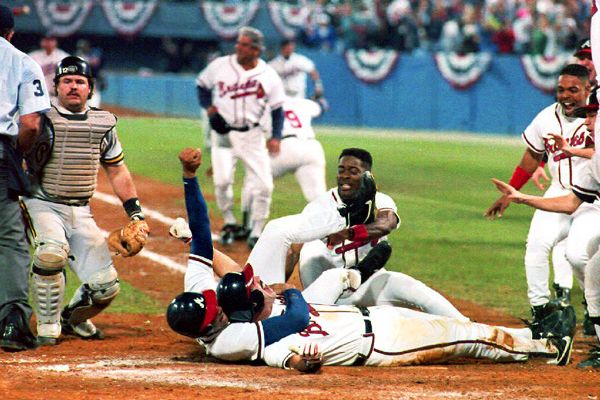Other people's children
Holiday season approaches, and with it our cherished traditions return. One of my rituals will be watching, for the fifty-seventh time, It's a Wonderful Life.
I know what the detractors say. This movie is overplayed. It's "Capra-Corn," the prime instance of director Frank Capra's excessive sentimentality. Science fiction writer Connie Willis, in her story "Miracle," discards It's a Wonderful Life in favor of Miracle on 34th Street, which (unlike Wonderful Life) emphatically does not let an evil deed go unpunished. I don't care. It's my favorite Christmas movie, and I mean to watch it again.
One scene always has particular resonance for me. At his very nadir, George Bailey resorts to praying (something he admits to doing only rarely). A belligerent man seated nearby slugs George. Evidently, one Mr. Welch is upset with the way George has berated Mr. Welch's wife:
And the next time you talk to my wife like that you'll get worse. She cried for an hour. It isn't enough she slaves teaching your stupid kids how to read and write, and you have to bawl her out . . . .Teaching other people's children to read and write. If we lay aside the premises of the argument between Mr. Welch and George Bailey — it isn't nice to trash people over the phone or, for that matter, to slug them in person — we'd see that this scene from It's a Wonderful Life defines an essential truth about education. Teachers at every level do their best, at often substantial personal sacrifice, to serve other people's children.
At first blush, altruism in any form seems to contradict Richard Dawkins's "selfish gene," the biological imperative of individuals to propagate and to channel their efforts on behalf of their own progeny. The willingness of human beings to help other people's children — this is after all the most succinct definition of altruism — is as bewildering, at a societal scale, as the peacock's tail was to Charles Darwin during the dawn of evolutionary theory.
But selfless sacrifice is a striking feature of human behavior. As I write this column, we Americans pause to observe Veterans' Day, mindful of the ultimate sacrifice made by so many on our behalf. Our challenge as lawyers is to find expressions of the altruistic instinct within our own profession. Even more important, we must find ways to foster altruism within a professional culture where time is the scarcest asset.
 Willingness in law to serve other people's children extends far beyond teaching. Indeed, my corner of the profession rests on nothing more than an altruistic credo that is as crucial as it is modest: nothing we do — in teaching, scholarship, or service — matters except to the extent that it advances the higher training and useful education of other people's children and solves problems that afflict them.
Willingness in law to serve other people's children extends far beyond teaching. Indeed, my corner of the profession rests on nothing more than an altruistic credo that is as crucial as it is modest: nothing we do — in teaching, scholarship, or service — matters except to the extent that it advances the higher training and useful education of other people's children and solves problems that afflict them.In order to find the most striking instances of lawyerly virtue, we must look far beyond the most privileged corners of the academy. At the University of Louisville, our own students set the charitable pace. From the Samuel L. Greenebaum Public Service Program to the Student Bar Foundation and the impending opening of the University of Louisville Law Clinic, UofL law students begin shaping the charitable norms of their future profession from the very start. The Commonwealth's law schools will join our state's most dedicated public servants in seeking, once again, debt relief for lawyers who have elected to work on behalf of the public at salaries that are hardly commensurate with their service and sacrifice. Finally, although April 15 may be the cruelest day of the cruelest month, the winter holidays happily coincide with the tax calendar. There is no better season, for those of us who are better positioned to give money than to give time, to find some way to serve other people's children.
These are the ways that George Bailey, American cinema's favorite independent banker, teaches contemporary lawyers to serve and to give. I'll close this column by recasting the lesson that George learns from his youngest child in It's a Wonderful Life.

Charity and sacrifice alone have the power to change a world where too often the bell tolls for me and for thee. Do our best for our fellow human beings, and the chime of clapper and ball on flawless metal will signify a more uplifting message: Every time a bell rings, some angel has given another person's child her wings.













0 Comments:
Post a Comment
<< Home